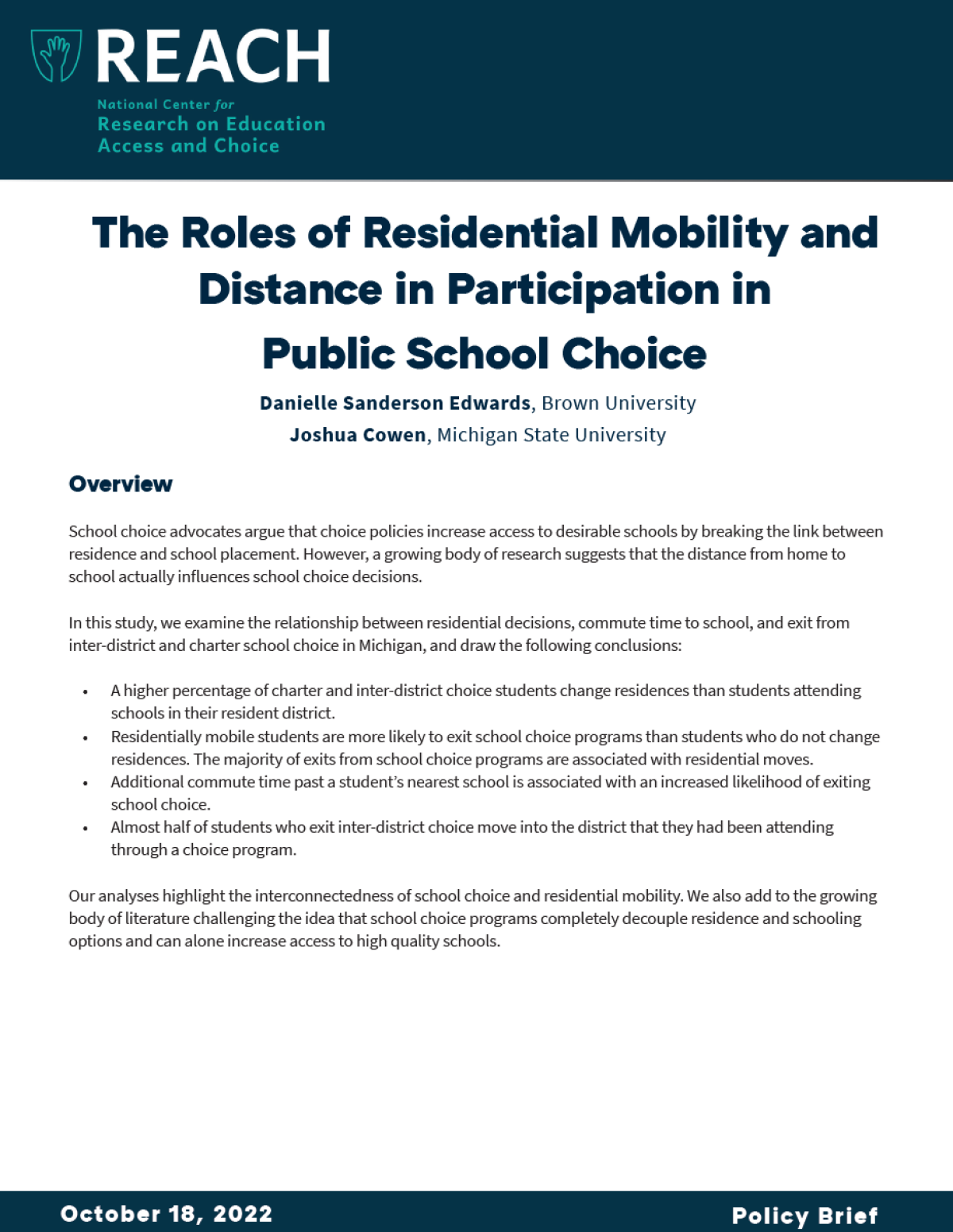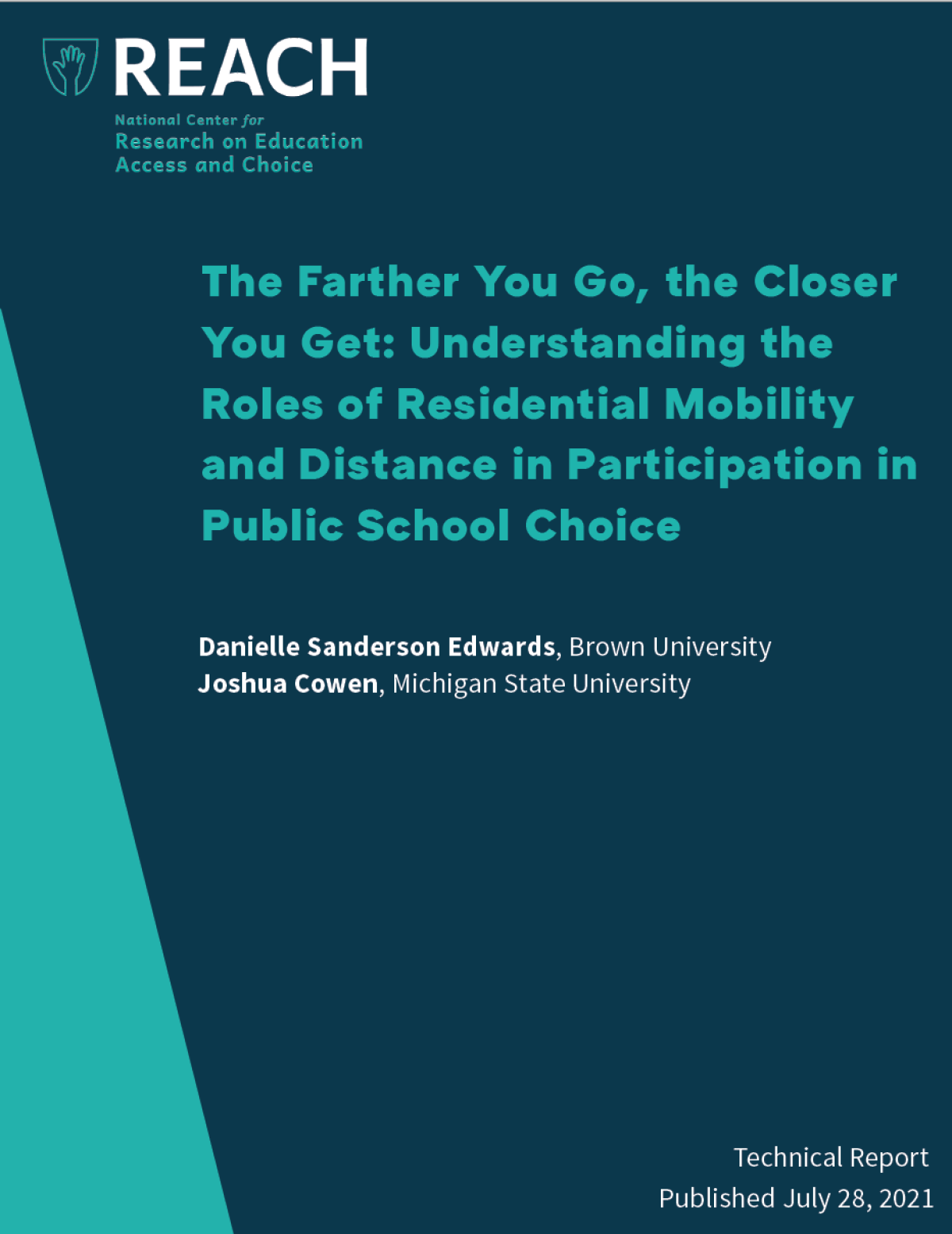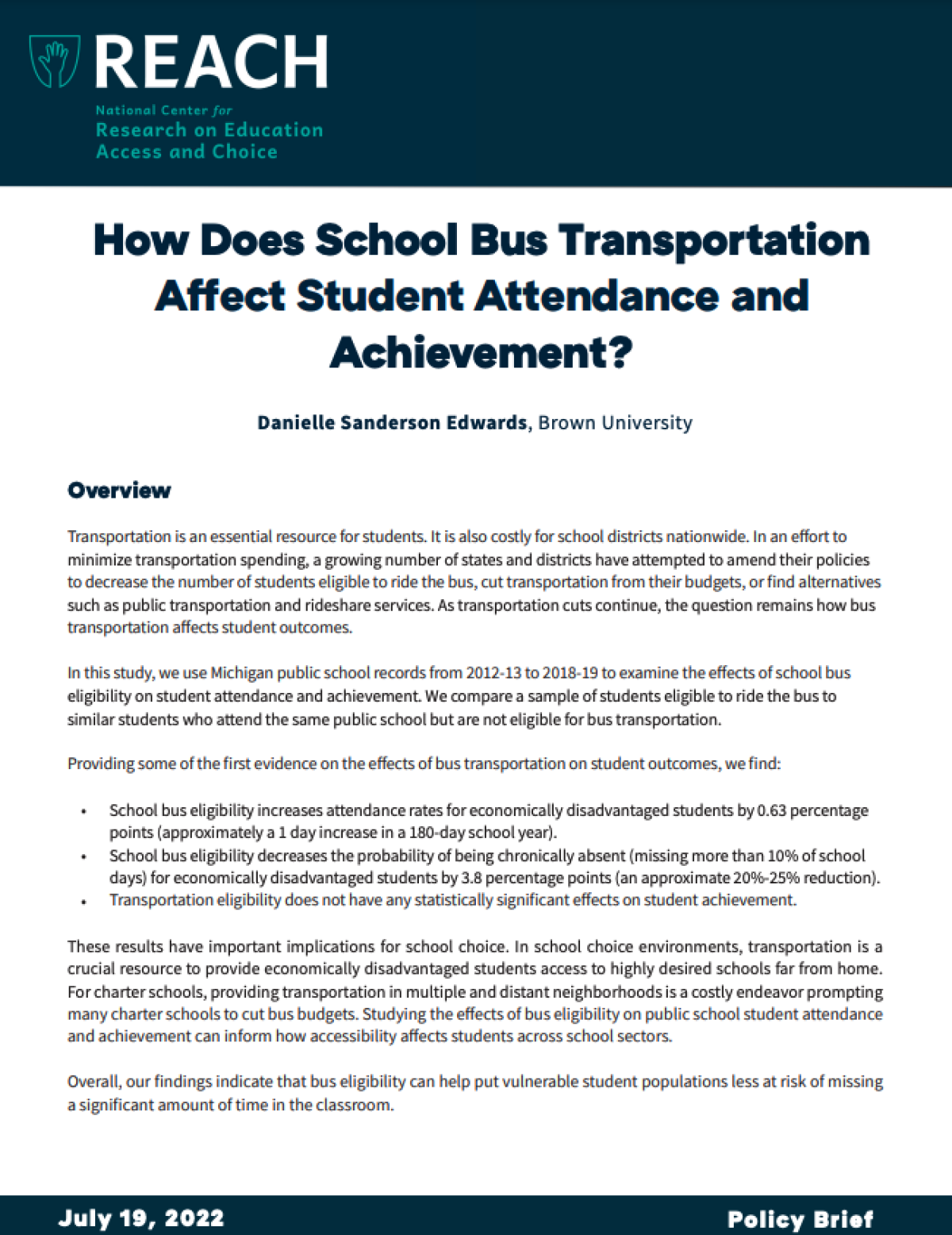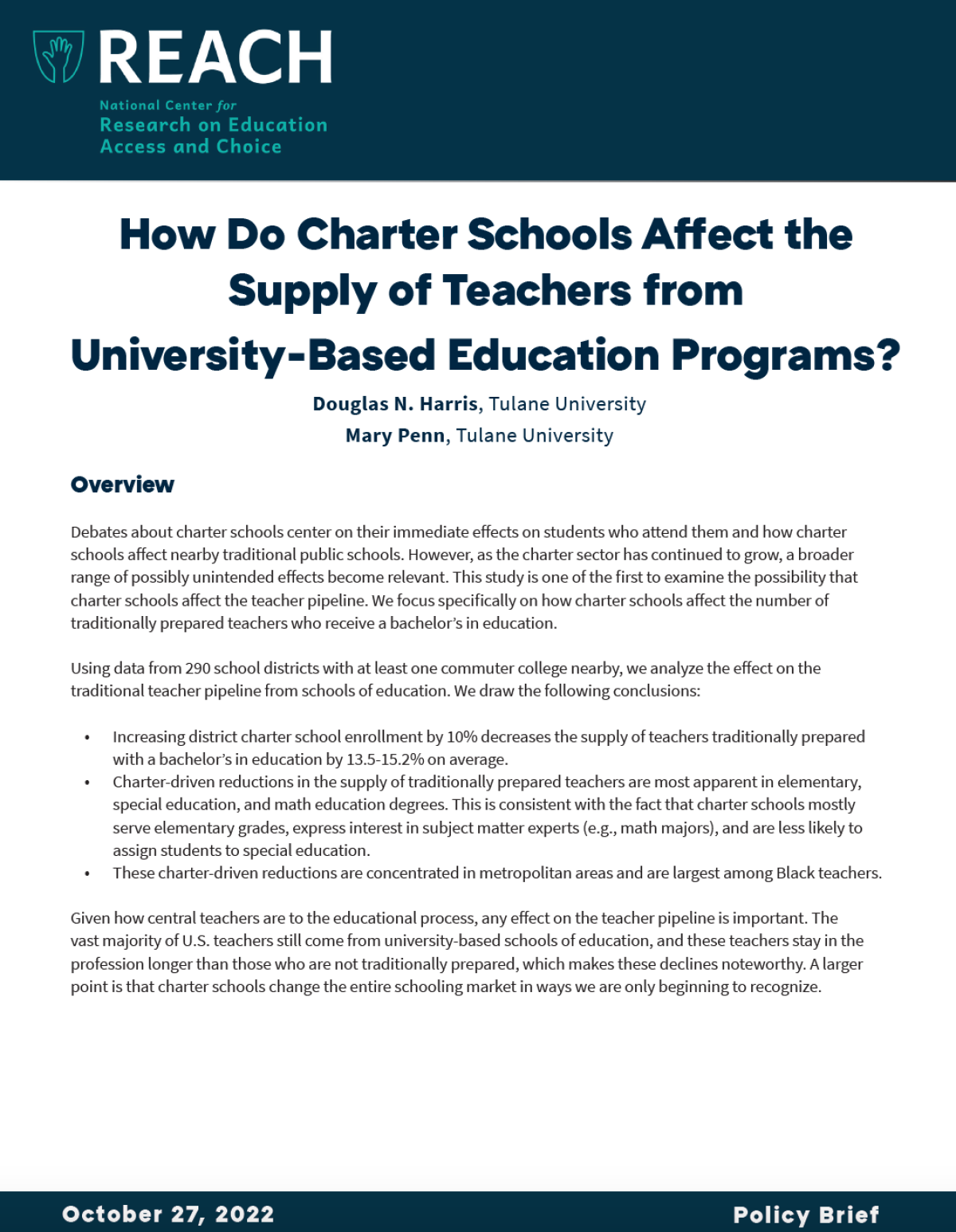School choice advocates argue that choice policies increase access to desirable schools by breaking the link between residence and school placement. However, a growing body of research suggests that the distance from home to school actually influences school choice decisions.
In this study, we examine the relationship between residential decisions, commute time to school, and exit from inter-district and charter school choice in Michigan, and draw the following conclusions:
- A higher percentage of charter and inter-district choice students change residences than students attending schools in their resident district.
- Residentially mobile students are more likely to exit school choice programs than students who do not change residences. The majority of exits from school choice programs are associated with residential moves.
- Additional commute time past a student’s nearest school is associated with an increased likelihood of exiting school choice.
- Almost half of students who exit inter-district choice move into the district that they had been attending through a choice program.
Our analyses highlight the interconnectedness of school choice and residential mobility. We also add to the growing body of literature challenging the idea that school choice programs completely decouple residence and schooling options and can alone increase access to high quality schools.



